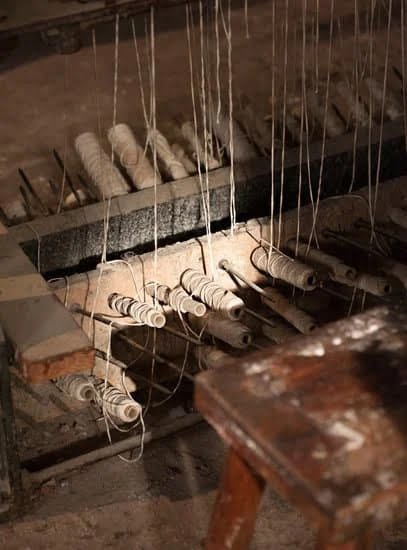Stearic acid is a versatile and commonly used substance in various industries, including the production of candles. It is known for its ability to enhance the properties of wax and improve the quality of candles. In this article, we will explore the role of stearic acid in candle making, its benefits, different types of candles that use it, how to use it properly, common misconceptions, and safety considerations.
Stearic acid is a saturated fatty acid that occurs naturally in various animal and vegetable fats. It is a key ingredient in many candle making processes due to its unique properties. One may wonder, what is stearic acid used for in candle making? Well, it serves several essential purposes such as improving the texture and hardness of the wax, increasing the opacity and luster of candles, and minimizing shrinkage during cooling.
In candle making, stearic acid plays a crucial role in enhancing the overall quality and functionality of candles. Its ability to modify the characteristics of wax makes it an indispensable component in various types of candles.
From traditional pillar candles to specialty decorative candles, stearic acid helps achieve desired textures, shapes, and burning qualities. The next sections will delve deeper into these aspects and provide insights on using stearic acid effectively while dispelling common misconceptions about its use in candle making.
The Properties of Stearic Acid
Stearic acid is a saturated fatty acid that is derived from animal and vegetable fats and oils. It is a waxy solid that is white in color, and it has a slightly shiny appearance. One of the distinctive properties of stearic acid is its ability to harden or increase the melting point of candle wax. This property makes it an important additive in candle making, as it helps candles to burn longer and more steadily.
Another key property of stearic acid is its ability to enhance the opacity and whiteness of candles. When added to the wax, stearic acid can create a more visually appealing finished product, making it particularly useful for creating decorative or specialty candles. Additionally, stearic acid also helps to reduce shrinkage and mottling in candles, resulting in a smoother and more uniform appearance.
In addition to its cosmetic benefits, stearic acid also plays a role in improving the fragrance throw of scented candles. By helping to bind the fragrance molecules more effectively, stearic acid can enhance the overall scent release and longevity of scented candles.
This makes it an essential ingredient for candle makers who want to create high-quality fragranced products that deliver a long-lasting aroma. Overall, understanding the properties of stearic acid is crucial for successful candle making, as it enables artisans to optimize their wax formulations for improved performance and aesthetic appeal.
The Role of Stearic Acid in Candle Making
Stearic acid is a saturated fatty acid that is commonly used in the production of candles. It is a waxy, solid substance that is derived from natural sources such as animal fats and vegetable oils. The main role of stearic acid in candle making is to harden the wax and increase its melting point. This helps the candle to burn longer and more evenly, as well as reducing the amount of soot and smoke produced.
When stearic acid is added to candle wax, it also helps to improve the opacity and texture of the finished product, giving it a smoother appearance. In addition, stearic acid can also act as a binding agent, helping to hold the other ingredients in the candle together more effectively.
One of the benefits of using stearic acid in candle making is that it allows for more creativity and versatility in the types of candles that can be produced. By adjusting the ratio of stearic acid to other ingredients, it is possible to create different textures, colors, and scents in candles. This makes stearic acid an essential component for candle makers who want to produce high-quality products with unique characteristics.
| Properties | Role |
|---|---|
| Hardens wax | Increases melting point |
| Improves opacity and texture | Acts as a binding agent |
Benefits of Using Stearic Acid in Candle Making
Stearic acid is a saturated fatty acid that is commonly used in candle making. It is a waxy substance that comes from animal and vegetable fats and oils, and it plays a crucial role in the production of high-quality candles.
One of the main benefits of using stearic acid in candle making is its ability to harden the wax, which helps the candle to hold its shape and burn longer. Additionally, stearic acid can also improve the opacity, texture, and fragrance-holding capacity of the candle.
When stearic acid is added to candle wax, it raises the melting point of the wax, resulting in a more durable and longer-lasting candle. This means that candles made with stearic acid are less likely to soften or bend in warmer temperatures, making them ideal for use in a variety of environments. Furthermore, stearic acid can also reduce oil migration in candles, preventing unsightly oil spots from forming on the surface.
In addition to its practical uses in candle making, stearic acid also offers environmental benefits. Candles made with stearic acid tend to produce less soot and smoke compared to those made without it. This means that not only do these candles burn longer and more evenly, but they also provide a cleaner and healthier environment for the user.
Different Types of Candles That Use Stearic Acid
Pillar Candles
One of the most common uses of stearic acid in candle making is for pillar candles. Pillar candles are cylindrical in shape and stand alone without the need for a container. They are known for their ability to hold intricate designs and shapes, and stearic acid helps these candles maintain their shape and structure while burning.
Votive Candles
Another type of candle that benefits from the use of stearic acid is votive candles. Votive candles are small, often cylinder-shaped, and are designed to be burnt within a container. The addition of stearic acid to votive candles helps to increase their hardness, reduce melting, and minimize dripping during burning.
Taper Candles
Taper candles also frequently utilize stearic acid in their production. These tall, slender candles are typically used for decoration or illumination, and stearic acid contributes to their ability to stand upright without bending or drooping as they burn.
It’s important to note that while stearic acid can be beneficial for various types of candles, the exact amount used will depend on the specific requirements of each candle type as well as the desired burning characteristics. Its role varies from adding hardness and durability to improving burning qualities, making it an essential component in many candle-making processes.
How to Properly Use Stearic Acid in Candle Making
Stearic acid is a versatile substance that plays an important role in candle making. When used correctly, it can enhance the properties and appearance of the candles. Here are some guidelines on how to properly use stearic acid in candle making:
1. Measure the correct amount: It’s essential to measure the right amount of stearic acid for your candle recipe. Typically, stearic acid is used in concentrations ranging from 3-15% of the total wax weight, depending on the desired outcome. Using too little stearic acid may result in softer, less durable candles, while using too much can affect the burning characteristics.
2. Melting and blending: To properly incorporate stearic acid into your candles, it should be melted and blended with the wax at temperatures around 160-180°F (71-82°C). Stir the mixture gently until the stearic acid is fully dissolved and integrated with the wax.
3. Pouring temperature: Once the stearic acid has been thoroughly mixed with the wax, it’s important to pour the candle at an appropriate temperature. The ideal pouring temperature will depend on both your specific wax blend and fragrance oils, but typically falls between 120-140°F (49-60°C).
By following these steps, you can ensure that you are using stearic acid effectively in your candle making process. This will help you achieve better results such as improved hardness, opacity, and longer burn time for your candles.
Common Misconceptions About Stearic Acid in Candle Making
Stearic Acid Causes Toxic Fumes
One common misconception about stearic acid in candle making is that it produces toxic fumes when burned. In reality, stearic acid is used as a hardening agent and to increase opacity in candles, but it does not release harmful fumes when the candle is lit. When used properly and in the correct proportions, stearic acid can enhance the quality of the candle without posing any health risks.
Stearic Acid Makes Candles Burn Faster
Another misconception is that stearic acid accelerates the burning rate of candles. While it is true that stearic acid can increase the melting point of wax, which may make the candle appear to burn faster, it actually extends the overall burn time of the candle by providing a longer-lasting and more consistent flame. When combined with other waxes, stearic acid can improve the performance of candles without sacrificing their longevity.
Stearic Acid Is Difficult to Work With
Some people may avoid using stearic acid in their candle making process due to the misconception that it is difficult to work with. In reality, stearic acid is relatively easy to incorporate into candle recipes and can be melted along with other wax materials. As with any new ingredient, it may require some experimentation and adjustments to find the right balance for your desired results, but once mastered, stearic acid can be a valuable addition to candle making endeavors.
Safety Considerations When Using Stearic Acid in Candle Making
Stearic acid is a widely used ingredient in candle making due to its ability to harden wax, improve burning quality, and enhance the opacity of the candles. However, it’s important to handle stearic acid with caution to ensure safety during the candle-making process. Here are some important safety considerations to keep in mind when using stearic acid:
- Use protective gear: When handling stearic acid, it’s important to wear gloves, a mask, and protective eyewear to prevent any contact with your skin or inhalation of the fine particles. This will help minimize the risk of irritation or potential health hazards.
- Proper ventilation: It is crucial to work in a well-ventilated area when using stearic acid. This will help dissipate any fumes or vapors that may be released during the melting process and reduce the risk of respiratory issues.
- Avoid direct contact with skin and eyes: In case of accidental contact with stearic acid, rinse the affected area immediately with plenty of water. If ingested or if it comes into contact with your eyes, seek medical attention right away.
By following these safety precautions, you can ensure a safe and enjoyable candle making experience while working with stearic acid.
Additionally for those looking for some uses for stearic acid outside from candle making check out this overview on where else can stearic acid be used.
Conclusion and Final Thoughts on the Importance of Stearic Acid in Candle Making
Stearic acid is an essential component in the process of making candles. Its unique properties allow for the creation of long-lasting and sturdy candles that are able to withstand various conditions. The inclusion of stearic acid not only enhances the aesthetic appeal of the candle but also contributes to its functionality.
In candle making, stearic acid serves as a hardening agent, playing a crucial role in enhancing the durability and long-lasting nature of the final product. This ensures that the candles maintain their shape and form, even when exposed to different temperatures. Additionally, stearic acid helps reduce wax shrinkage, which prevents unsightly sinkholes from forming on the surface of the candle.
It is important to note that safety precautions should be followed when using stearic acid in candle making. This includes proper handling procedures and adherence to recommended guidelines for usage. By understanding the significance of stearic acid in candle making, individuals can create high-quality candles that not only look visually appealing but also demonstrate exceptional performance characteristics.
Frequently Asked Questions
Is Stearic Acid Necessary in Candle Making?
Stearic acid is not necessary in candle making, but it can be helpful. It is often used to harden wax, increase opacity, and improve the overall quality of the candle. However, many candle makers choose to omit stearic acid from their formulations and still produce high-quality candles.
What Does Stearic Acid Do to Wax Melts?
When added to wax melts, stearic acid can help to harden the wax and improve its scent throw and color retention. This means that the wax melts will hold their shape better, release fragrance more effectively, and maintain their color for a longer period of time.
What Is the Difference Between Stearin and Stearic Acid?
The main difference between stearin and stearic acid is that stearin is a natural byproduct of animal fats or vegetable oils, while stearic acid is a synthetic fatty acid derived from these same sources. Stearin is often used in the production of candles and soap, while stearic acid has a wider range of industrial applications beyond just these two products.

Welcome to my candle making blog! In this blog, I will be sharing my tips and tricks for making candles. I will also be sharing some of my favorite recipes.





